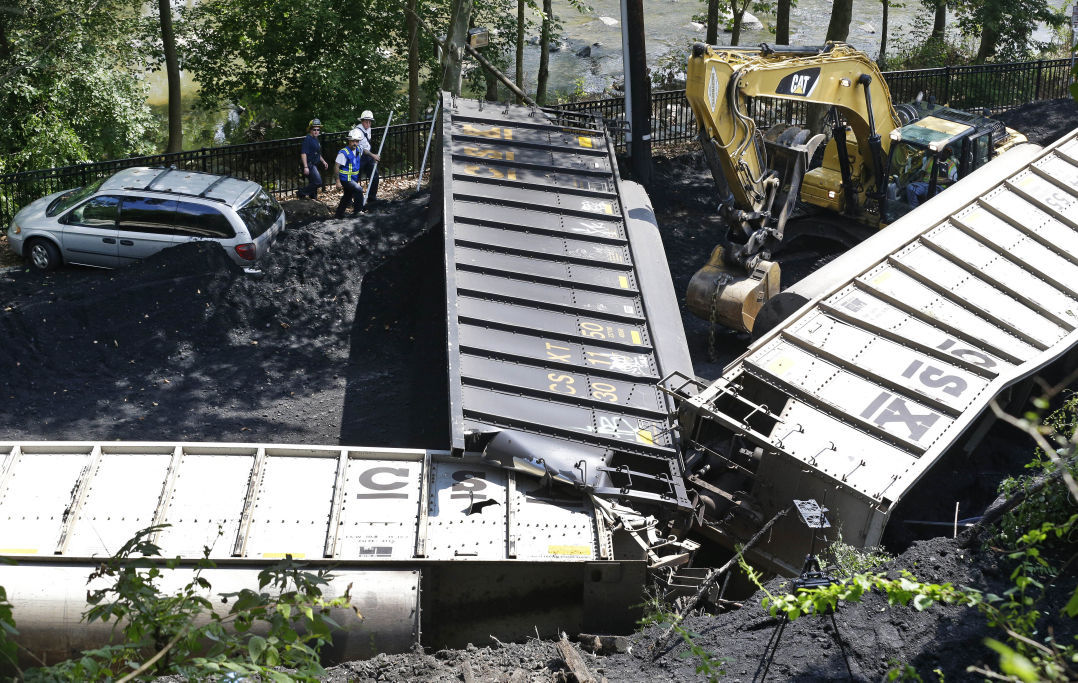Derailed freight train. Elliott City MD, 2012.
Rail track wear standards elude agreement
MATTHEW BROWN and MICHAEL KUNZELMAN Associated Press WritersA pair of train derailments in 2012 that killed two people in Maryland and triggered a fiery explosion in Ohio exposed an unsettling truth about railroads in the U.S. and Canada: No rules govern when rail becomes too worn down to be used for hauling hazardous chemicals, thousands of tons of freight or myriad other products on almost 170,000 miles of track.
U.S. transportation officials moved to establish universal standards for when such steel gets replaced, but resistance from major freight railroads killed that bid, according to Associated Press interviews with U.S. and Canadian transportation officials, industry representatives and safety investigators.
Now, following yet another major accident linked to worn-out rails — 27 tanker cars carrying crude oil that derailed and exploded in West Virginia earlier this year — regulators are reviving the prospect of new rules for worn rails and vowing they won't allow the industry to sideline their efforts.
"We try to look at absolutely every place where we can affect and improve safety," said Federal Railroad Administrator Sarah Feinberg. "Track generally is the place that we're focusing at the moment, and it's clearly overdue. Rail head wear is one place in particular that we feel like needs to be addressed as soon as possible."
An official announcement on the agency's intentions to revisit rail wear is expected by the end of the year.
In the meantime, federal regulators haven't taken the positive steps that they need to, said Ronald Goldman, an attorney for the families of the two 19-year-old women who died in a 2012 derailment outside Baltimore.
"It's a lack of will, not a lack of ability, in my opinion," he added.
Industry supporters argue that the seven major freight railroads in the U.S. and Canada are in the best position to know what is going on with their lines, including when they need to be replaced or have the maximum speeds for trains traveling on them lowered..... more here

No comments:
Post a Comment